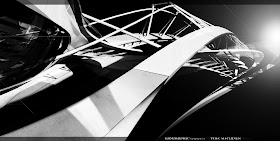This thesis examines the fourth dimension of architecture, the temporal dimension. Many studies have shown that people have a deeper connection with built spaces and its experience which changes with time. Architectural works are evaluated on their newness or heritage, respectively based on their degree of functionality or historic image. The question arises that can architecture better provide the user with rich sensations of time? Can it modify the perception of user by providing him/her an experience which they didn’t experience before? How does user develop perception about the space and what role does time play in achieving that perception? Such questions provided the ground for this thesis. I have tried to find the connection between temporal and spatial dimension and the notions attached to it. This thesis examines the works and ideas of several individuals in order to formulate a design methodology that engages a broader spectrum of this temporal dimension.
It is hard to understand the 4D notion in 3 dimensional world. Time itself present different perceptions in mind of different users. This thesis is a study of human perceptions and their experiences. The idea is to develop an architecture which complies with the notion of time and gives a new experience each time user experiences that space. We can design in a manner that heightens the awareness of layered model of space bound with time and by unfolding each layer at a time we can create multiple experiences of the same space.
A new trend is emerging in architecture today: dynamic and time-like architectures that are capable of moving, flexing and reconfiguring themselves. Its conceptualization of architectural space is undergoing drastic innovation. Architect-designers have become perceptual painters of conscious experience through the use of digital technologies that permit the sensorial intensity of an experience of movement, color, form, and space.
Architects are considering 4th dimension time in designing the spaces. Time-like architectures can be static in manifestation but not in design, or they can be kinetic in both design and manifestation. They can respond to local or remote parameters cybernetically and synchronously in real-time, or asynchronously in delayed time. Timeless architecture can be physical or virtual or anything in between. The concept that the Universe may have more than three spatial (or four space– time) dimensions dates from 1917 when Peter Kaluza suggested that electromagnetism is really an extension of the gravitational field into a fifth dimension of space. This theory was supported by Einstein and Bergmann (1938).

No comments:
Post a Comment